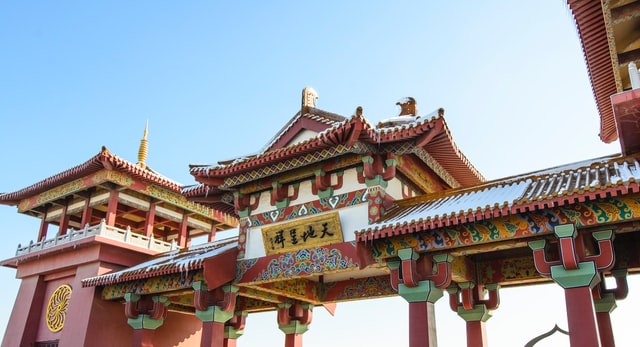Chinese Community in Costa Rica

The Costa Rican population is made up of a variety of local ethnic groups and migrant populations that, over the years, have established themselves as part of the national cultural diversity. One of these populations is the Chinese community, who, after several waves of migration to Costa Rica, are here to stay. It is a self-sufficient community, that is to say, it is generally dedicated to a wide range of production and service activities to satisfy the diverse material and spiritual needs of the Costa Rican native population.
A Historic Migration
The first records of large migrations of Chinese population to Costa Rica, mainly from Canton and Macao, date back to the late 1850s. Migration during this period was due to the conditions of poverty and instability in mainland China. These people initially arrived in the port of Puntarenas, which led to the founding of a Sino-Puntarenas colony. Precisely because of their great need, Chinese migrants were hired for heavy labor such as mining in Abangares, the construction of the Atlantic railroad, and banana plantations. The deplorable conditions of these jobs and the blind eye of the authorities resulted in the organization of these settlers, with the creation of Chinese associations on the coasts and in San José. This helped many to begin a transition to trade and specialized businesses.
By 1890, there had been a significant growth of the migrant population in Costa Rica, not only from China. However, at the same time, policies were implemented to prohibit the migration of non-white ethnic groups, while European populations were encouraged to come to the country with promises of great benefits. These restrictions, despite reducing the arrival of Chinese people, did not stop them completely, since there were several methods of illegal entry such as infiltrating in shipments.
It was with the outbreak of World War II that changes began to take place again, since China was one of the countries attacked. Costa Rica declared it an ally in 1944, which allowed the country to help its population that was suffering from the Japanese invasion. This added onto the 1943 initiative to eliminate racial restrictions, resulting in the enactment of Law No. 51 of December 29, 1943. With both factors, the second migratory wave happened with a regularized entry to the country.
In the 70’s, the third migratory wave arose, this time mainly from Taiwan. Since the 60’s, due to the instability of Hong Kong, people had begun to move away from this area, but in the case of Taiwan, it was its economic boom that encouraged migration. The Costa Rican government, observing Taiwan’s prosperity, implemented measures to attract investment and, with it, new migrants with the prospect of establishing their businesses. The measures did not benefit only this sector however, and people from Hong Kong and Canton with relatives already in the country, decided to take advantage of the laws and join them.
The Creation of Chinatown
The gold fever and the migrations motivated the creation of Chinese communities, established in the most important cities of the world. This is how the famous Chinatowns were born. Today, they are tourist attractions in their own right, and their inner life brings fame to the capitals that host them. These neighborhoods exhibit an ethnic culture, characterized by the gap between the culture of the host society and the culture of the inserted community, with the purpose of distinguishing itself.
After establishing diplomatic relations in 2007, China developed the construction of the National Stadium, founded the Confucius Institute at the University of Costa Rica and later built Chinatown on the Paseo de los Estudiantes in San José.
The Chinese community in Costa Rica is very large and significant, so limiting business to a specific area happens to stimulate private investment, in order to create new cultural centers, restaurants, and other types of businesses.
Thus, in October 2009, the foundations were laid for the creation of the Chinatown. However, it was not until 2012 that construction began, a construction that constitutes a platform for Sino-Costa Rican cultural exchanges with the purpose of maintaining relations between the two countries in the social, political, and cultural fields. Its decoration and the arch that marks the entrance to the place are purposely designed to mark the classical Chinese architecture and modern elements.
The Current Chinese Community
Today, the Chinese Association of Costa Rica is still active in society and is the main non-profit institution that has sought to unite the Chinese community with the Costa Rican population since 1960. Other associations such as the one in Puntarenas, the oldest in the country, and the one in Limón, also work to promote equality.
In recent years, San Jose’s Chinatown has gained popularity thanks to its restaurants that offer various desserts and drinks a little different from the traditional, but have achieved great popularity among young people. A unique market with spices, exotic fruits, herbs, mushrooms, bubble tea and even the lucky bamboo are products that bring with them the representation of cultural identity.
Aesthetics become the center of attention, both in their food and in their merchandise. At the same time, you can find restaurants with more authentic food or variations of other Asian cuisine.
On the other hand, traditions such as the celebration of the Chinese New Year are present. This custom, based on the lunar calendar, is accompanied by dance and live traditional music, martial arts by the Shaolin Temple Costa Rica and the acrobatic dragon dance.
In Synthesis
- The Chinese community in Costa Rica maintains many of its ancestral traditions alongside new trends.
- Migration occurred in three stages: the second half of the 9th century, during the Second World War and in the 1970s.
- In October 2009, the first steps towards the creation of Chinatown were taken, however, it was not until 2012 that construction began.
- Currently, Chinatown has gained popularity thanks to its restaurants that offer various dishes, desserts and drinks a little different from what Costa Ricans know.
Bibliography
https://www.corteidh.or.cr/tablas/r28455.pdf
http://institutoconfucio.ucr.ac.cr/sites/default/files/IC_CAT%C3%81LOGO%20160%20.pdf
https://www.scielo.cl/scielo.php?script=sci_arttext&pid=S0719-77212021000100151&lng=es&nrm=iso
https://revistas.ucr.ac.cr/index.php/estudios/article/view/27403/27536
Authors
Zelda Walters y Angie Loveday para Sensorial Sunsets.
Navigate articles




